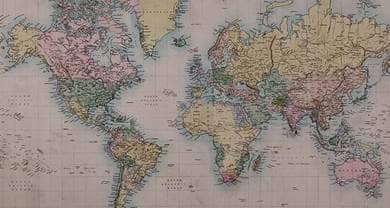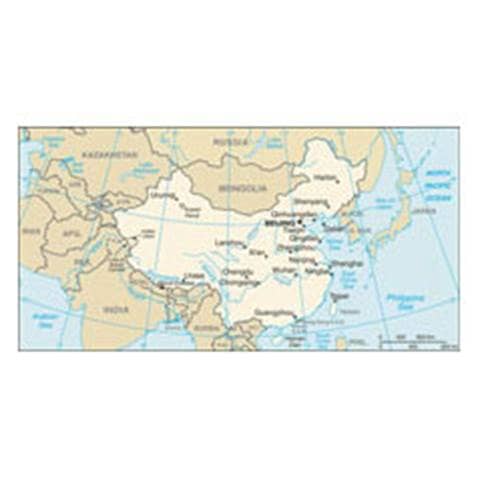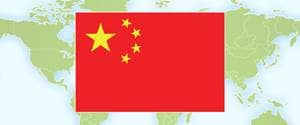- Trending:
- Forgiveness
- |
- Resurrection
- |
- Joy
- |
- Feminism
- |
- Afterlife

RELIGION LIBRARY
China

The country has an area of 3.5 million square miles and a population of 1.3 billion. A February 2007 survey, conducted by researchers in Shanghai and reported in state-run media, concluded that 31.4 percent of Chinese citizens ages 16 and over, totaling 300 million persons, are religious believers.
According to a Government white paper published in 1997, there are reportedly more than 100,000 officially recognized sites for religious activities, 300,000 officially recognized clergy, and more than 3,000 officially recognized religious organizations. China's government has not issued detailed statistics on religious faith since the 1997 white paper.
The Government officially recognizes five main religions: Buddhism, Taoism, Islam, Catholicism, and Protestantism. The Russian Orthodox Church operates in some regions, particularly those with large populations of Russian expatriates or with close links to Russia. Foreign residents in the country who belonged to religious faiths not officially recognized by the Government were generally permitted to practice their religions, although Chinese citizens were often banned from participating in religious activity organized by foreign residents.
It is difficult to estimate the number of Buddhists and Taoists, because they do not have congregational memberships and many practice exclusively at home. However, a Chinese public opinion polling firm found in 2007 that 11 to 16 percent of Chinese adults are Buddhists but that fewer than one percent of Chinese adults identify themselves as Taoists. The state-approved Xinhua news agency estimates there are 100 million Buddhists in China. There are no official statistics confirming or contradicting the number of Taoists in China.
According to official figures, there are as many as 20 million Muslims. Independent estimates range as high as 50 million or more. There are more than 40,000 Islamic places of worship (more than half of which are in the XUAR), more than 45,000 imams nationwide, and 10 Islamic schools.
The country has 10 predominantly Muslim ethnic groups, the largest of which is the Hui, estimated to number more than 10 million. The Hui are centered in Ningxia Hui Autonomous Region, but there are significant concentrations of Hui throughout the country. Hui Muslims slightly outnumber Uighur Muslims, who live primarily in the XUAR. According to an official 2005 report, the XUAR had 23,900 mosques and 27,000 clerics at the end of 2004, but fewer than half of the mosques were authorized to hold Friday prayer and holiday services. In Beijing, there are 200,000 Hui Muslims and 160 mosques. The Government supports the building of mosques, pays the salaries of imams, and supports halal stores and hospitals.
Officials from the Three-Self Patriotic Movement/China Christian Council (TSPM/CCC), the state-approved Protestant religious organization, estimated that at least 20 million citizens worship in official churches. Government officials stated there are more than 50,000 registered TSPM churches and 18 TSPM theological schools. The World Christian Database estimates there are more than 300 unofficial house church networks. The Pew Research Center estimates 50 million to 70 million Christians practice without state sanction. One Chinese scholar estimated in a public lecture at Renmin University that the number of Christians in China, including those in TSPM churches and unregistered churches, is near 90 million. By contrast, the Chinese Communist Party is estimated to have 60 million members, 10 million of whom are believed to participate regularly in religious services. Currents of Calvinism or Reformed theology gained influence among house churches and Christian intellectuals. Pentecostal Christianity was also popular among house churches.
Although the Government authorized funding to build new places of worship for registered venues, the number of temples, churches, and mosques has not kept pace with growth in the number of worshippers. For example, in Beijing, a city of 17.4 million, there are only 13 registered Protestant churches. Some registered churches faced difficulty registering new church venues. The shortage of space in registered churches is one factor driving the proliferation of unregistered churches and groups.
The Catholic Patriotic Association (CPA) reports that 5.3 million persons worship in its churches, and it is estimated that there are an additional 12 million or more persons who worship in unregistered Catholic churches that do not affiliate with the CPA. According to official sources, the Government-sanctioned CPA has more than 70 bishops, nearly 3,000 priests and nuns, 6,000 churches and meeting places, and 12 seminaries. There are thought to be approximately 40 bishops operating "underground," some of whom are in prison or under house arrest. Of the 97 dioceses in the country, 40 reportedly did not have an acting bishop in 2007, and more than 30 bishops were over 80 years of age.
Falun Gong is a self-described spiritual discipline that is Buddhist in nature. Falun Gong combines the meditation techniques and physical exercises of qigong (a traditional Chinese exercise discipline) with the teachings of its founder Li Hongzhi. Prior to the Government's 1999 ban on Falun Gong, it estimated that there were 70 million adherents; the Government subsequently adjusted the number of adherents to approximately 2 million. Falun Gong sources estimate that tens of millions continue to practice privately.
| Population | Population (2009 est.) 1,338,612,968 |
| Religious Demographics | Daoist (Taoist), Buddhist, Christian 3%-4%, Muslim 1%-2% |
| Ethnic Groups | Ethnic Groups Han Chinese 91.5%, Zhuang, Manchu, Hui, Miao, Uyghur, Tujia, Yi, Mongol, Tibetan, Buyi, Dong, Yao, Korean, and other nationalities 8.5% (2000 census) |
| Languages | Languages Standard Chinese or Mandarin (Putonghua, based on the Beijing dialect), Yue (Cantonese), Wu (Shanghainese), Minbei (Fuzhou), Minnan (Hokkien-Taiwanese), Xiang, Gan, Hakka dialects, minority languages (see Ethnic groups entry) |
| Country Flag |  |










